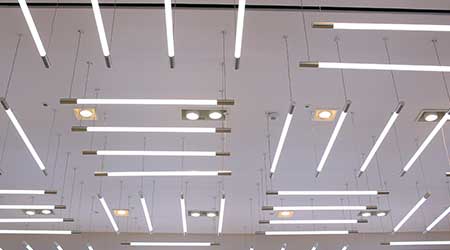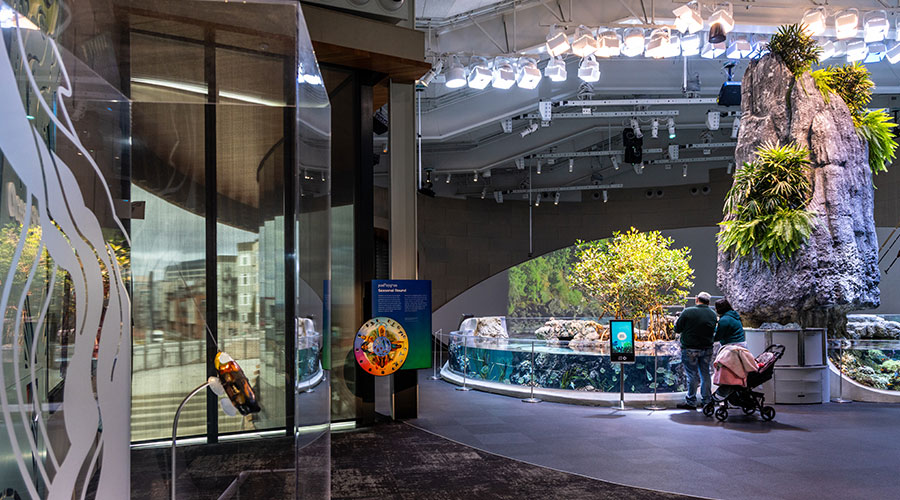How To Future-Proof Your Lighting
With LEDs, your lighting may still be in your ceiling in 2035. Here's how to prepare for the future.
With LED lighting, what you install today may still be in your ceiling in 2035, so it pays to think forward to what options may be appropriate between now and then. If issues related to climate change and power production again become paramount, efforts to cut kilowatt-hour consumption and peak demand may make control options both financially desirable and (as energy codes change) possibly mandatory.
At minimum, consider including occupancy sensors as part of a conversion to LEDs. Unlike fluorescent lamps whose lives are shortened by sensors’ extra on-off cycling (especially if powered by instant start ballasts), LEDs are essentially indifferent to it.
Many utilities already offer lucrative incentives for controls, buying down their product cost. Such programs often change, so check with your utility account representative about its most recent offerings.
To prepare for the future, look for these specs/characteristics:
• Easily replaceable driver (preferably dimmable, or bi-level, or the option to switch to them).
• Color and light distribution best for the tasks at your facility.
• Built-in motion and light sensors, or ability to easily add them later. Sensors should be adjustable through a remote control or smartphone app (rather than requiring a ladder to access them).
• Seven-year (10 is even better) warranty on all electric components.
• If considering wireless control, choose a system compatible with the existing or planned control protocol (e.g., BACnet).
Some types of facilities may wish to consider the value of tunable white lighting wherein color temperature is adjustable. A growing body of data has found that changing CCT may impact circadian rhythms and mood. No kits reviewed for this article presently offer that option (though some new LED fixtures do), but its deployment should be reviewed when developing purchasing specs for such facilities.
Author's note: LED technology continues to advance rapidly. Before applying any of lessons in this article, check out the specs for several brands and types of LED retrofits and new fixtures. New/better options (including better controls, longer warranties, easier installation) continue to appear. Avoid buying "old" LED equipment that may cost a tad less but lack better options. Remember: what you install today may last 15 to 20 years.
Lindsay Audin, CEM, LEED AP, CEP, is president of EnergyWiz, an energy consulting firm based in Croton, N.Y. He is a contributing editor for Building Operating Management.
Email comments and questions to edward.sullivan@tradepress.com.
Online Resources For LEDs
1. The DOE’s Lighting Facts Label Program provides technical review data on retrofit kits whose specs have been verified by independent labs. Using its selection process to find kits designed for a recessed 2x4 troffer returned reviews of 124 products, many of them performed in the last year.
2. Up to December 2016, the Lighting Facts Label Program had provided technical review data on TLEDs, but it no longer does so. For TLEDs that have passed muster with the Design Lights Consortium (DLC), a non-profit organization supported by state, regional, and utility energy efficiency programs throughout the United States and Canada, visit DLC's website.
3. To review rebates for LEDs and controls, go to the Database of State Incentives for Renewables and Efficiency.
4. A July 2017 overview of controls integrated into fixtures may be found here.
5. Here is an excellent (and free) online course on wireless control options for LED lighting.
6. Learn more about tunable LEDs here.
Related Topics:














